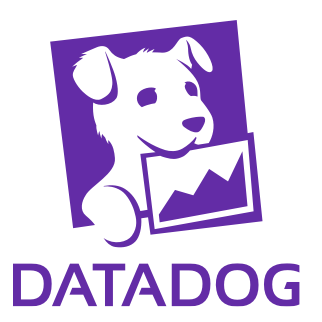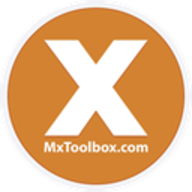Disclaimer: The tools mentioned on this list do not represent an endorsement or a paid promotion. Also, reviews showcased do not represent the views and opinions of Cledara or its employees.
According to our research, in the last 10 years, companies have increased their SaaS subscriptions from 20 to 120 on average. This is an increase of 500% in a decade. Needless to say, these are a lot of licenses and vendors to manage.
IT departments get swamped, and it becomes almost impossible to tell who’s using what and when. This may not only cause the company to waste money, but can also become a security risk. Luckily, we have SaaS monitoring tools that can help us with the task.
Here at Cledara, we’ve taken a look at the most popular SaaS monitoring tools amongst our customers and decided to list them together in this blog post so you can find the one that adapts best to your needs.
What are SaaS Monitoring Tools?
Saas monitoring tools are designed for tracking and analyzing applications to make sure they’re always working as intended. This is software created to monitor other software, if you will. They help businesses run efficiently, minimize downtime, and identify performance issues immediately.
Considering how important software is for modern companies, it is no exaggeration when we say that SaaS monitoring tools are crucial to keep the business running. When applied correctly, these give full visibility into an organization’s digital environment. Some of the benefits that come from a SaaS monitoring practice include:
- Improved performance and uptime
- Cost optimization
- Enhanced security and compliance
- Better user experience
- Proactive issue resolution
Understanding SaaS Monitoring
This practice is critical for IT teams and business managers to ensure they are getting the most value from their SaaS investments while maintaining optimal performance and security. Here are some common functions of SaaS monitoring tools:
- Performance Monitoring: Tracks the speed and responsiveness of SaaS applications to identify performance bottlenecks or slowdowns.
- Uptime Monitoring: Ensures that SaaS services are consistently available and alerts teams to any outages or downtime.
- Usage Analytics: Provides insights into how SaaS tools are being used across an organization, helping identify underutilized tools or departments over-relying on certain software.
- Cost Tracking: Monitors the cost of SaaS subscriptions and compares it to usage to ensure efficient spending.
- Security and Compliance Monitoring: Ensures that SaaS applications meet security standards and comply with industry regulations, which is crucial for preventing data breaches or fines.
- Integration Monitoring: Tracks the performance and reliability of integrations between SaaS tools and other software systems, ensuring seamless workflows.
How to Choose the Best SaaS Monitoring Tool For Your Business
When looking for a SaaS monitoring solution for your organization, it is important to make sure they comply with the following:
Real-time Monitoring and Alerts
It refers to the continuous observation and tracking of systems, applications, or processes as they occur, with immediate feedback on their status and performance. It allows for instant data collection, analysis, and reporting, enabling organizations to respond to issues as soon as they arise, rather than after the fact.
Performance Metrics and Analytics
These tools collect lots of data. In order to fully understand and learn from it, the platform should offer some sort of analytics hub with graphs and charts, so you can easily understand the most important information.
User Experience Monitoring
Tracking, analyzing, and improving how users interact with software, websites, or applications in real time. This monitoring should go beyond just tracking technical performance, such as load times and error rates, it should also capture how users feel about the interactions they have with the system.
Integration Capabilities
If you want to see across all your organization’s systems, apps, and services, you’ll need to find a monitoring solution that offers several and varied integrations – hundreds of them, at least. Most platforms offer an integrations page on their website where you can see the apps they’re compatible with.
Customizable Dashboards and Reporting
By tailoring data visualization and reporting to specific needs, users can better understand and act on the information that is most relevant to them. Customizable dashboards and reports allow employees to focus on the metrics and data points that are most relevant to their role or department. If your product or services are specialized, your monitoring tools should follow suit.
Automated Discovery and Inventory Management
This means that the monitoring tool continuously scans the organization’s environment to detect all active SaaS applications. This ensures that the monitoring tool captures every SaaS service in use, including those that may have been added without IT’s knowledge (shadow IT), providing full visibility across the entire SaaS ecosystem.
How to Use This List
Since its inception, Cledara has helped manage more than 1.1 million SaaS purchases and renewals from over 4,000 vendors. We have taken that data and packaged it into easy-to-digest guides for everyone to experience.
Pricing
The pricing reflected is an average of what Cledara customers pay for the different tools yearly.
Reviews
User opinions that appear on this list are summaries from user opinions found on popular software review websites like G2, Gartner, and Trustpilot.
Ranking
The ranking is based on the popularity of the tools amongst Cledara customers. The more teams that use it, the higher it will appear in the ranking.
Most Popular SaaS Monitoring Tools for 2025
Below, you'll find a list of the 20 most popular SaaS monitoring tools of the year. Each with their respective average yearly pricing and main features.
#1 Sentry
Sentry is a powerful application monitoring tool that helps developers take action on broken lines of code, crashes, and API calls. It provides visibility across all platforms with features such as custom queries, dashboards, cross-project issues, distributed tracing, stack traces, context, breadcrumbs, releases, and issue owners.
Sentry's Main Features
- Application Monitoring
- Custom Queries
- Dashboards
- Cross-project Issues
- Distributed Tracing
- Stack Traces
- Context and Breadcrumbs
- Releases and Issue Owners
Sentry's Yearly Pricing
Based on the price Cledara customers pay for Sentry, the average price for 0-50 Staff is $533, for 50-150 Staff it's $597, and for 150-250 Staff it's $1,020.
Sentry's Reviews
Users appreciate Sentry's robust reporting capabilities, ease of data import, and the ability to integrate with other online bookkeeping software, making it a versatile tool for managing multiple aspects of business operations.
#2 Datadog
Datadog is a monitoring service for cloud-scale applications, providing monitoring of servers, databases, tools, and services through a SaaS-based data analytics platform.
Datadog's Main Features
- Infrastructure Monitoring
- Application Performance Monitoring
- Log Management
- User Experience Monitoring
- Network Performance Monitoring
- Security Monitoring
Datadog's Yearly Pricing
Based on the price Cledara customers pay for Datadog, the average price for 0-50 Staff is $3,153, for 50-150 Staff it's $15,017, and for 150-250 Staff it's $22,222.
Datadog's Reviews
Users appreciate Datadog's comprehensive monitoring capabilities and its ability to provide a unified view of their entire infrastructure and application stack.
#3 AppSignal
AppSignal is a platform that provides performance monitoring and error-tracking tools for applications and websites. It offers solutions for developers to monitor the performance of their applications in real-time, track errors, and diagnose issues.
AppSignal's Main Features
- Application Performance Monitoring
- Error Tracking
- Real-time Insights
- Detailed Performance Metrics
- Integration with Popular Frameworks and Tools
AppSignal's Yearly Pricing
Based on the price Cledara customers pay for AppSignal, the costs tend to be between $2,067 and $2,449, with an average price of $2,239.
AppSignal's Reviews
Users value AppSignal for its comprehensive application monitoring capabilities and its ability to provide actionable insights. The platform is particularly appreciated for its ease of integration with various programming languages and frameworks.
#4 Checkly
Checkly is a platform that provides monitoring and testing services for web applications, including end-to-end testing, API monitoring, and performance tracking. It is designed to help developers and DevOps teams identify and resolve issues in web applications and APIs, aiming to maintain performance and reliability.
Checkly's Main Features
- API Monitoring
- End-to-End Testing
- Synthetic Monitoring
- Performance Tracking
- Real-Time Alerting
- Integration with CI/CD Pipelines
Checkly's Yearly Pricing
Based on the price Cledara customers pay for Checkly, the costs tend to be between $111 and $690, with an average price of $293.
Checkly's Reviews
Users appreciate Checkly for its comprehensive approach to API and website monitoring. The platform is praised for its ease of use and its ability to integrate seamlessly with existing development workflows. Developers particularly value its capabilities in automating API and end-to-end testing, which helps in maintaining the reliability of web applications.
#5 MXToolBox
MXToolBox is a company that supports Internet operations by providing network diagnostic and lookup tools. It offers a suite of services designed to help IT professionals and system administrators monitor and troubleshoot various aspects of their network infrastructure, with a particular focus on email systems.
MXToolBox's Main Features
- DNS Health Check
- Blacklist Monitoring
- Mail Server Testing
- HTTP/HTTPS Testing
- WHOIS Lookup
- SSL Certificate Check
- Email Deliverability Tools
MXToolBox's Yearly Pricing
Based on the price Cledara customers pay for MXToolBox, the costs tend to be between $347 and $2,364, with an average price of $932.
MXToolBox's Reviews
Users value MXToolBox for its comprehensive suite of network diagnostic tools. The platform is particularly appreciated for its ease of use and the depth of information it provides for troubleshooting network issues. IT professionals find it especially useful for diagnosing and resolving email-related problems, such as deliverability issues and blacklisting. The variety of tools available in a single platform makes it a go-to resource for many system administrators and network managers.
Best Practices When Implementing SaaS Monitoring
Best practices for SaaS monitoring involve understanding the impact of performance issues on business outcomes, not relying exclusively on service provider dashboards, maintaining control over operations through proactive monitoring, and fostering better communication by creating a shared source of truth for cross-team collaboration.
Here are 20 essential tips for developing an effective monitoring strategy to maintain the health, performance, and security of infrastructure and applications:
- Understand Your Infrastructure
- Map out all components, including servers, databases, applications, and network devices.
- Use network topology maps and system architecture diagrams for visualization.
- Define Clear Objectives
- Set specific goals for performance, uptime, and security.
- Align monitoring objectives with business goals.
- Define key performance indicators (KPIs) to measure success.
- Choose the Right Tools
- Select monitoring tools that fit your requirements and expertise.
- Consider flexibility, customization options, and community support.
- Monitor All Layers
- Cover hardware, operating system, application performance, and user experience.
- Implement end-to-end monitoring across the entire application stack.
- Implement Real-Time Monitoring
- Use real-time dashboards and alerts for immediate issue detection.
- Set up automated alerts for critical issues.
- Set Up Effective Alerts and Notifications
- Configure alerts with appropriate thresholds to avoid alert fatigue.
- Use severity levels to prioritize alerts.
- Implement escalation policies for critical issues.
- Regularly Review and Update Your Strategy
- Schedule periodic reviews of your monitoring strategy.
- Update monitored metrics, tools, and alert thresholds as needed.
- Analyze Historical Data
- Use historical data to identify trends and patterns.
- Leverage insights for capacity planning and predicting future issues.
- Ensure Security and Compliance
- Secure your monitoring systems against unauthorized access.
- Ensure compliance with relevant security standards and regulations.
- Regularly audit and update security measures.
- Foster a Culture of Proactive Monitoring
- Educate teams on the importance of monitoring.
- Provide training on effectively using monitoring tools.
- Implement Redundancy in Monitoring
- Use external health checks or canary tests for redundancy.
- Consider client-sourced metrics as an additional data source.
- Set up independent, redundant metric pipelines.
- Prepare for Monitoring System Failures
- Design monitoring for partition tolerance.
- Create "flying blind" dashboards and procedures for when monitoring systems fail.
- Collocate monitoring and actions to reduce dependencies where appropriate.
- Test Your Metrics and Metric-Driven Mitigations
- Regularly test monitoring systems using fault injection techniques.
- Validate alarm thresholds and measure time to detect and mitigate issues.
- Optimize Metric Aggregation and Sampling
- Set aggregation periods based on recovery time objectives.
- Ensure sufficient sampling for detecting low-grade errors (aim for about 100 data points per aggregation period).
- Implement Comprehensive Monitoring Types
- Include digital experience monitoring, stack monitoring, database monitoring, availability monitoring, and security monitoring.
- Leverage Automation
- Use automated discovery and inventory management for comprehensive visibility.
- Implement automated root cause analysis and remediation suggestions.
- Ensure Scalability
- Choose solutions that can scale with your business growth.
- Opt for tools that can handle increasing complexity in your environment.
- Focus on Integration Capabilities
- Select tools that integrate well with your existing tech stack.
- Consider both on-premises and cloud-based deployment options.
- Prioritize Full-Stack Observability
- Aim for comprehensive visibility across your entire environment.
- Use intuitive and customizable dashboards for better understanding.
- Continuously Optimize and Refine
- Regularly assess the effectiveness of your monitoring strategy.
- Be prepared to adapt your approach as technologies and business needs evolve.
In conclusion, a proactive, regularly updated monitoring strategy ensures smooth, efficient system operations, aligned with business goals.
Future Trends in SaaS Monitoring
AI and machine learning in monitoring
As AI and machine learning technologies continue to advance, we can expect to see more sophisticated predictive analytics capabilities in SaaS monitoring tools. These will enable businesses to anticipate customer needs, optimize resource allocation, and manage risks more effectively.
AI-powered security systems will become more robust, continuously learning and adapting to new cyber threats. Natural language processing advancements will lead to more intuitive user interfaces and seamless interactions. We'll also likely see a rise in explainable technology, addressing the need for transparency in decision-making processes.
Additionally, AI-driven analytics will provide even deeper insights into user behavior and market trends, allowing for hyper-personalization of services and more accurate forecasting.
Increased focus on user experience metrics
There's a growing trend in SaaS monitoring that places increased emphasis on user experience (UX), reflecting the evolving landscape of the industry. This shift recognizes that traditional performance metrics, while still important, are no longer sufficient in today's competitive SaaS market.
By understanding how users interact with the software, where they struggle, and what features they find most valuable, SaaS companies can make data-driven decisions to improve their products. This approach helps in creating more intuitive interfaces, streamlining workflows, and ultimately delivering a better user experience.
As the SaaS industry continues to grow and competition intensifies, the ability to monitor and optimize user experience will become increasingly important for companies looking to stand out and succeed in the market.
Integration with DevOps and CI/CD pipelines
The integration of SaaS monitoring with DevOps practices and CI/CD pipelines is becoming increasingly crucial. This trend reflects the growing need for real-time insights and rapid response capabilities in the fast-paced world of software development and delivery.
By embedding monitoring tools directly into the CI/CD pipeline, development teams can gain immediate feedback on application performance, user experience, and potential issues at every stage of the deployment process. This integration enables DevOps teams to detect and address problems earlier in the development cycle, reducing the risk of failures in production.





















.webp)




